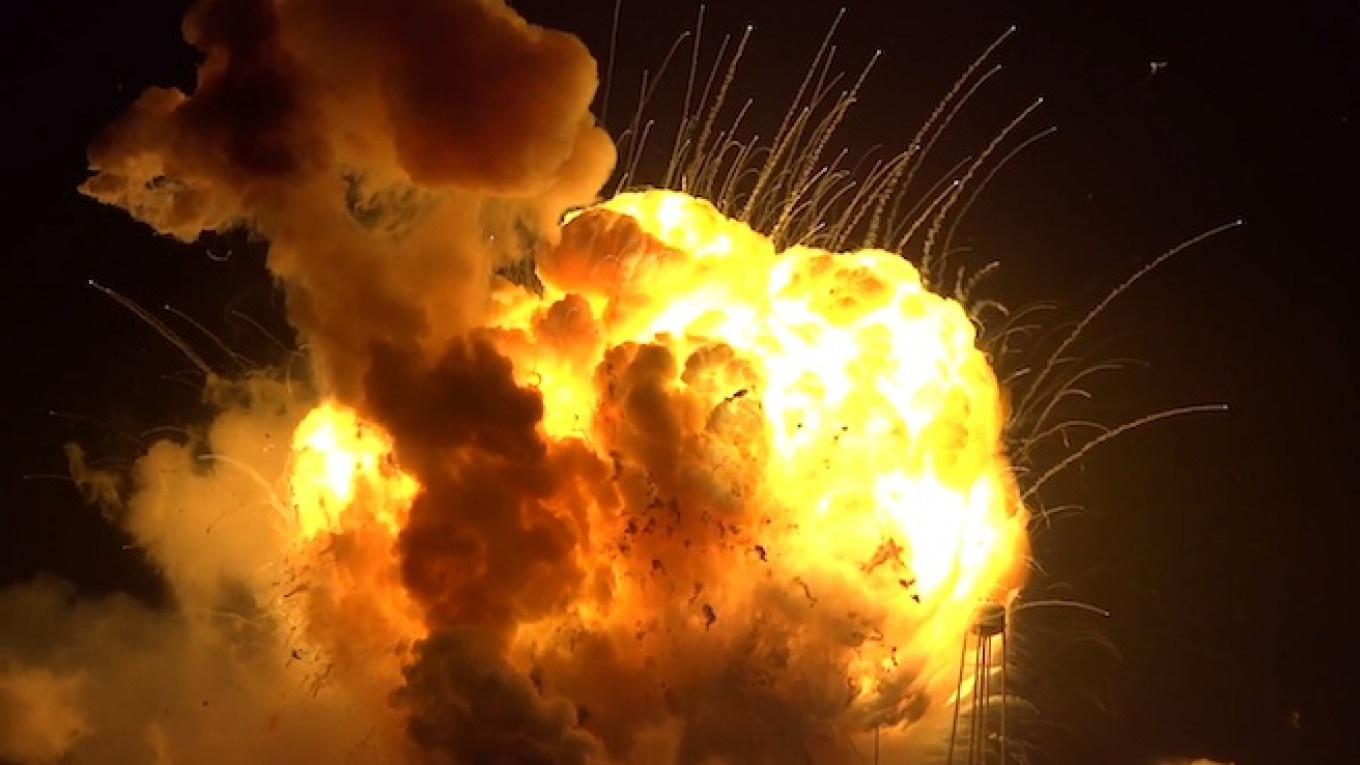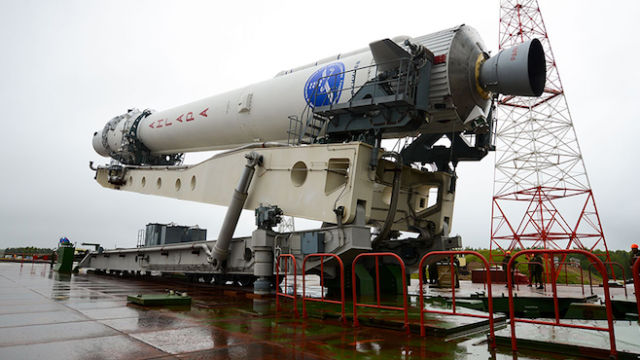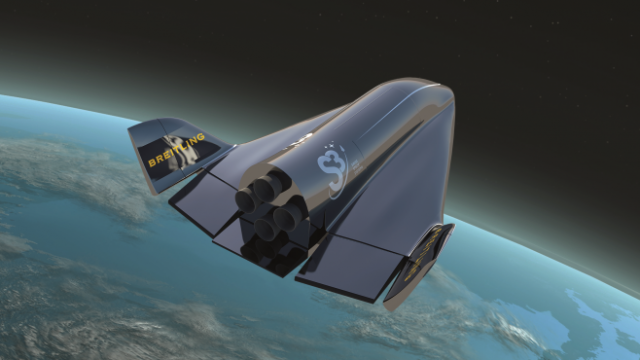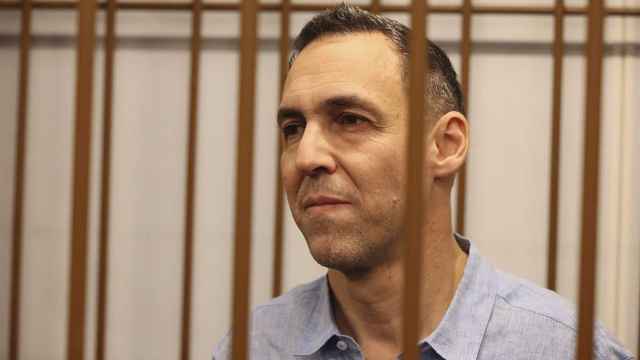An unmanned Antares rocket powered by a Russian engine exploded seconds after liftoff from a commercial launch pad on Virginia's eastern seaboard, marking the first accident since U.S. space agency NASA turned to private operators to deliver cargo to the International Space Station.
The 14-story rocket, built and launched by Orbital Sciences Corp, blasted off from its launch pad at the Wallops Flight Facility at 6:22 p.m. local time (10:22 p.m. GMT) carrying a Cygnus cargo ship bound for the space station. It burst into flames moments later, then plunged to the ground in a huge ball of fire and smoke, but authorities said no one was hurt.
The six crew members in orbit aboard the space station — two NASA astronauts, one from the European Space Agency and three Russian cosmonauts — watched the launch via a NASA television feed, said Mike Suffredini, the space station program manager.
"They were disappointed … of course, they are well aware that they have plenty of resources on orbit," Suffredini told reporters during a conference call.
With a Russian cargo ship due to reach the space station on Wednesday, just 14 hours after the explosion in Virginia, the loss of the Cygnus supply vessel posed no immediate problem for the orbiting team.
"There was no cargo that was absolutely critical to us that was lost on that flight. The crew is in no danger," NASA Associate Administrator William Gerstenmaier said. Suffredini added that the crew has enough food and other supplies aboard to last four to six months.
Orbital Sciences stock fell 15.5 percent to a two-month low of $25.65 in after-hours trade.
The cause of the mishap was under investigation, said Frank Culbertson, Orbital Sciences executive vice president.
Footage of Tuesday's launch showed the Antares rising slowly into the night sky as flames suddenly engulfed the rocket, from the bottom to the top about 11 seconds after liftoff, before the vehicle sank back downward in a conflagration.
"What we know so far is pretty much what everybody saw on the video," Culbertson said. "The ascent stopped, there was some disassembly of the first stage, it looked like, and then it fell to Earth. … We don't really have any early indications of exactly what might have failed."
Ronda Miller, manager of the Ocean Deli in Wallops Island, Virginia, said she felt the force of the blast from the eatery, about 5 miles (8 kilometers) from the launch pad.
"We were standing outside waiting for it to launch and we saw bright red, and then we saw a big black cloud, and it shook the whole building where we work," Miller said. "And then I came back in to work and seen fire trucks going every which way."
While the Cygnus mission was nonmilitary, the spacecraft included "some classified cryptographic equipment, so we do need to maintain the area around the debris in a secure manner," said Mike Pinkston, the company's Antares program manager.
Warning: Video contains profanity
Russian Rocket Engines
The accident raised fresh questions about the use of Russian engines in U.S. rockets. The Antares is powered by the AJ-26 engine built by GenCorp Inc division Aerojet Rocketdyne — a refurbished version of the Soviet-era NK-33 engine developed for the heavy-lift N-1 moon rocket.
According to Orbital Sciences' “user's guide” for the Antares rocket, some of the first stage's components such as its fuel tanks were built to spec by Ukraine's Yuzhmash machine building plant.
The rocket's engines are surplus Soviet-era NK-33 engines, owned and sold by Russia's Kuznetsov design bureau to the U.S.
In May, an AJ-26 exploded during a ground test at NASA's Stennis Space Center in Mississippi. Orbital Sciences and Aerojet have not released the cause of the engine failure.
"We need to go through this investigation and be very thorough before we determine whether that's a factor in this or not," Culbertson said.
Congress has been more concerned about Russian-made RD-180 engines that power United Launch Alliance's Atlas 5 rockets, used primarily to fly U.S. military satellites. The RD-180 has had no technical problems, but Russia has threatened to suspend exports in response to U.S. trade sanctions stemming from Moscow's annexation of Ukraine's Crimea region. United Launch Alliance is a partnership of Lockheed Martin and Boeing.
It was unclear how much the explosion would cost Orbital Sciences, whose flight was partly insured.
NASA officials said damage on the ground appeared limited to the Virginia-owned launch facility, but its full extent was not immediately known. The rocket itself and the cargo ship it carried were valued at $200 million, Culbertson said.
"This is the only pad that's certified for launching the Antares rocket, so repairing it will be one of our high priorities," he told reporters in a conference call. "We will not fly until we understand the root cause and the corrective action to make sure this doesn't happen again."
The Antares rocket has been launched successfully on four previous missions. Tuesday's launch attempt had been delayed one day after a boat sailed into a restricted safety zone beneath the rocket's intended flight path.
Virginia-based Orbital Sciences is one of two companies NASA has hired to fly cargo to the station after the space shuttles were retired. Tuesday's planned flight was to be the third of eight under the company's $1.9 billion contract with NASA.
SpaceX Launch Set for December
The second U.S. supply line to the station is run by privately owned Space Exploration Technologies, or SpaceX, which is preparing for its fourth flight under a separate $1.6 billion NASA contract, with launch slated for Dec. 9.
Outfitted with a new, more powerful upper-stage engine, the ill-fated Antares rocket carried a Cygnus spacecraft packed with 5,055 pounds (2,293 kilograms) of supplies, science experiments and equipment, a 15 percent increase over previous missions.
The Cygnus capsule was the first of two cargo ships scheduled to head to the space station this week. Russia was preparing to launch a Soyuz rocket and Progress freighter from the Baikonur Cosmodrome in Kazakhstan on Wednesday morning.
Cygnus was to loiter in orbit until Nov. 2, then fly to the station so astronauts could use a robotic crane to snare the capsule and attach it to a berthing port. The station, a $100 billion research laboratory owned and operated by 15 nations, orbits about 260 miles (418 kilometers) above Earth.
The Cygnus craft was loaded with more than 1,600 pounds (725 kilograms) of science experiments, one of them to chemically analyze meteors as they burn up in Earth's atmosphere.
The Cygnus also carried a prototype satellite owned by Redmond, Washington-based startup Planetary Resources Inc., which is developing technology to mine asteroids. The satellite, designated A3, was to be released into space by a commercially owned small spacecraft launcher aboard the station.
Orbital Sciences is in the midst of merging with Alliant Techsystem Inc's Aerospace and Defense division, a deal that analysts expect to close sometime early next year.
A Message from The Moscow Times:
Dear readers,
We are facing unprecedented challenges. Russia's Prosecutor General's Office has designated The Moscow Times as an "undesirable" organization, criminalizing our work and putting our staff at risk of prosecution. This follows our earlier unjust labeling as a "foreign agent."
These actions are direct attempts to silence independent journalism in Russia. The authorities claim our work "discredits the decisions of the Russian leadership." We see things differently: we strive to provide accurate, unbiased reporting on Russia.
We, the journalists of The Moscow Times, refuse to be silenced. But to continue our work, we need your help.
Your support, no matter how small, makes a world of difference. If you can, please support us monthly starting from just $2. It's quick to set up, and every contribution makes a significant impact.
By supporting The Moscow Times, you're defending open, independent journalism in the face of repression. Thank you for standing with us.
Remind me later.






